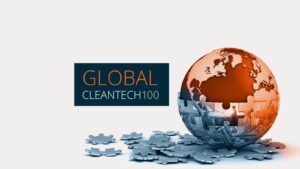Room for Innovation in Mature Renewable Energy Industries
In mid-October we hosted our latest Power Breakfast here in San Francisco with the support, as always, of Wilson Sonsini Goodrich & Rosati and Silicon Valley Bank. So, I’ve been meaning to post this for a few weeks, but have been happily busy on various client work and prep for a new baby girl set to arrive later this month! Better late than never!
At any rate, our topic in October was SaaS Innovation in Pursuit of Lowest-Cost Renewable Power, which – with the help of expert conversation starters from First Solar, SunPower, PVComplete, Power Factors, and Radian Generation – was interpreted with a specific focus on utility-scale solar plant design, construction, and operation & maintenance (O&M).
At the core of this topic’s selection was a probing question: With solar’s share of overall clean technology venture capital having fallen from 2008 highs of 35% of dollars invested and nearly 20% of deal volume to about 3% and 5%, respectively, in 2017 through Q3, is there still room for innovation in the sector?

To be sure, venture capital trends are only one indicator, but the solar industry’s maturation is undeniable with robust global supply chains evolving around crystalline silicon cells and modules and balance of systems components, while new PPA bids in many regions are cost-competitive with other fuel sources. Meanwhile, most innovation during that ten-year period has transitioned from hard-tech to soft costs and SaaS models in distributed solar.
What’s Happening
The need for further innovation at the utility-scale, meanwhile, has become clear with decades of operating data against original performance forecasts. Project sponsors and financiers may not be so eager to air their dirty laundry publicly, but the consensus feedback is that there has been a lot of variability between project forecasts and actual performance owing to factors like incomplete design-phase knowledge or inefficient O&M management.
This is now improving, thanks to new solutions being developed by both established players and start-ups.
The industry’s approach to cost reduction used to be mass standardization, but expansion into markets like China or the Middle East for many project developers has revealed challenges with differences in topography, soils, flooding tendencies, and other factors. Some solutions are therefore focused on integrating topography and digital surface modeling into things like tracker selection and site design at the panel level.
 This allows project sponsors to get more granular with performance modeling as, for instance, all trackers might not otherwise end up at the same aspect due to slight topographic variations that didn’t factor into superficial site evaluations.
This allows project sponsors to get more granular with performance modeling as, for instance, all trackers might not otherwise end up at the same aspect due to slight topographic variations that didn’t factor into superficial site evaluations.
Similarly, once the plant is built, ongoing management is benefiting from more niche insight. Panel soiling, for instance, rarely happens evenly across the whole plant, so limiting cleaning to those panels that need it can save on cost. More granular performance data and drone surveillance imagery are helping operators to uncover such cost savings – and to have a better answer when the banker complains about a half-percentage point degradation in output.
Such innovations are especially important now that capacity additions and industry maturity are attracting more capital to acquire existing project portfolios. New investors or buyers will haircut estimates when a plant can’t provide really good historical production data. So if an operator can’t positively attribute that low-generation month to equipment or weather, that translates to lower returns for the initial sponsor and investors.
Notably, during our development of October’s Power Breakfast, we heard that a lot of the same trends are true in wind power. It’s a mature rolled-steel-and-fiberglass type of industry that hasn’t seen a ton technological innovation in recent years. But new solutions, including Power Factor’s along with those of companies like Muir Data Systems and Romo Wind, are bringing new operational efficiencies and cost savings to plant design, construction, and O&M.
One further lesson from the solar industry that might benefit all maturing renewable power industries is that dangers exist among the new innovations being developed. Too many dashboards without standardization is one problem leading to new inefficiencies, while data concerns – privatized data that could be anonymized and benefit the entire industry, as well as data graveyards mounting from too much IoT with too little data management – received equal attention during our gathering.
So innovation is not dead in large-scale renewables – there’s plenty happening today and plenty of need for more. Stay tuned.


